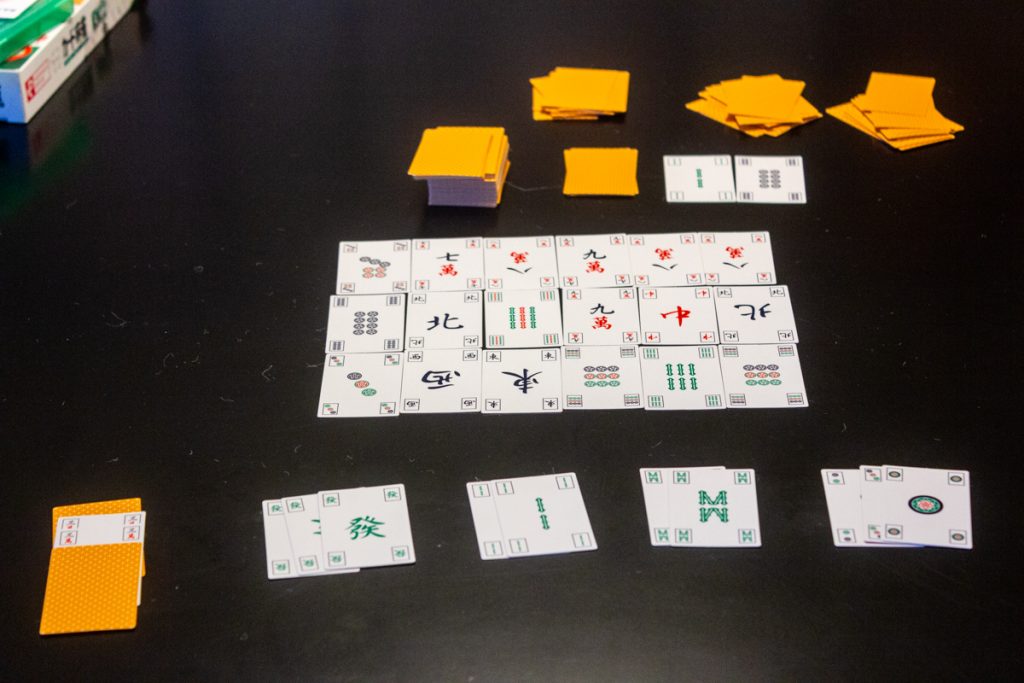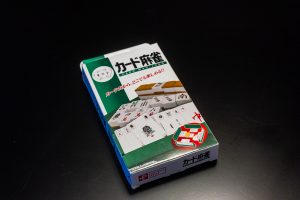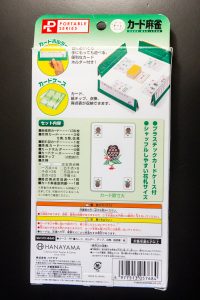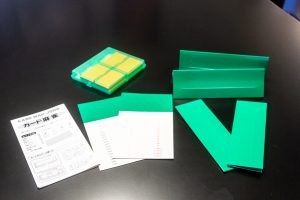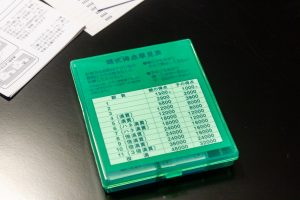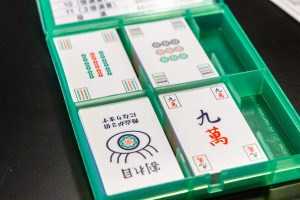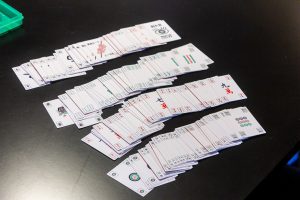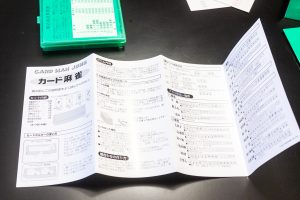Some time last year, one of my friends went to Japan and came back with a few goodies for me. One of those items was this: カード麻雀. Card Mahjong is exactly what it sounds like; mahjong re-imagined as a playing card game. On the surface, that makes perfect since since mahjong is essentially a card game.
The appeal of this would be it’s compact nature and price. At $5-10 (Amazon link), Card Mahjong is certainly a heck of a lot cheaper than even a basic mahjong set at $50 (Amazon link). While there’s no arguing that the price is compelling, its compact nature was something I struggled with. But before that, let’s open the box and see what’s inside.
The box contains a set of instructions, point sticks that get punched out of perforated cardstock, four card holders, and the cards, which come in a convenient plastic box with a little scoring helper. The cards also include optional red 5s, yakitori markers, and a card with a giant eye which I couldn’t make heads or tails out of. I left the point sticks as-is, just because it seemed like a huge mess waiting to happen. The plastic card holder includes pockets for the point sticks, so if you decide you want to play with this set, you’re good to go.
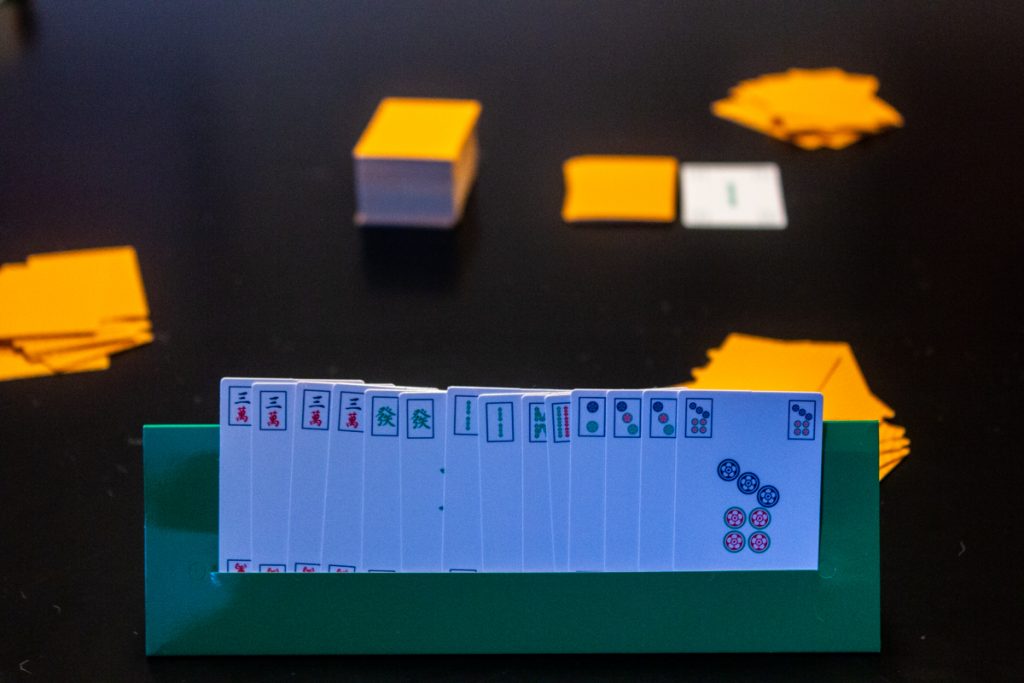
Above we can see the cards in the rack. With an opening hand they only just fit, which is fine, but getting them sorted and placed in the rack was a bit of a pain. I should mention that these are not the size of standard playing cards, but rather they are 34mm wide and 54cm tall, or about 1.35″ x 2.13″. That makes them quite hard to manouver in the hand, especially when you’re trying to sort 13-14 in your opening hand. When you’re trying to shuffle the deck… well, you can’t really shuffle it like you would with playing cards. Decks of playing cards have 52 cards, while this has 136, and all stacked up (without the extra 5s, yakitori markers, and that weird eye) measures in at 44.5mm tall, or 1.75″. The solution is to put them into a big pile and mix them around, not too dissimilar to shuffling tiles. Getting them back into a stack, and distributing them to players, also feels like it takes longer than shuffling and drawing real tiles would.

So far I’ve been kind of negative about these. The benefits here are that they’re inexpensive and portable, but actually using them in rather inconvenient. Instead, I think a better use for them would be as a study guide. Sure, shuffling the cards might be burdensome, but if you want a mahjong set to accompany a study book (like Daina Chiba’s Riichi Book 1, which I mentioned in this article), it’s a convenient way to draw and organize hands without having to carry around a loud and heavy set of tiles. I would highly recommend spending several minutes shuffling the cards for their first use, though. Even after, what I thought was quite a lot of shuffling, I was still drawing multiples of the same card one after the other, or with only one card between them. As you can see below, the rough cuts on the cards also left a lot of “hair” on the table. You can also see this little strands of paper on the stack of cards above. I’m assuming that, over time, these will get worn off, but you should expect to be in for a little bit of a mess the first couple times the cards get used.
